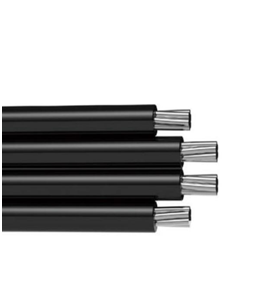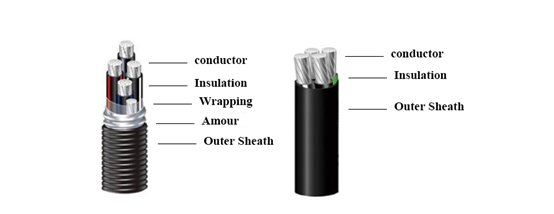For the past 15 years, technology companies have continued to explore the development of Internet Protocol (IP) software solutions for wireless sensor networks and other connected devices that need to use the Internet. In recent years, one of the most viable IP software solutions has emerged as the ZigBee IP specification released by the ZigBee Alliance in March 2013. ZigBee IP is the first open standard for an all-wireless mesh network solution based on the Internet Protocol Protocol Version 6 (IPv6), which provides seamless Internet connectivity for controlling low-power, low-cost devices. Dozens of different devices can be connected in a single control network.
The ZigBee IP design is primarily supporting the ZigBee Smart Energy IP protocol stack. This article explores the evolution of wireless sensor network IP solutions and the use of the new ZigBee Smart Energy IP protocol stack.
Sensor network first weight low power design
Since the late 1990s, sensor networks have become a major subject of research and experimentation, using networked smart devices that collect and transmit data to enhance structural monitoring, enhance energy efficiency, or increase crop yields. It is no longer necessary to say more. The basic techniques for building a sensor network include:
• Low power and efficient radio technology
Typical equipment has a battery life of several years and provides energy harvesting for other devices that cannot be powered by batteries or mains.
• Reliable mesh networks and agreements
Used to achieve unattended long-term operation.
• Appropriate application agreement
Allows devices to exchange information through agreed data formats to support autonomous operation.
The IEEE 802.15.4 standard, released in 2003, and the commercial radio transceivers that met the requirements in 2004, provide the foundation for low-power wireless communications. Since then, IEEE standards have been expanded and improved in 2006 and 2011. With the release of the 15.4e and 15.4g revisions, commercial radio transceiver vendors have successfully reduced their power consumption (RF) components by nearly half, and expect power to be halved again in the presence of next-generation components.
Reliable network protocol development and performance verification take a long time. Private mesh network protocol stacks, such as EmberZNet or TInyOS from Berkeley, have released wireless chips that are compatible with the 15.4 standard. Although these protocol stacks are used and further developed, the growth and expansion of the market relies on standard solutions to achieve interoperability and whether company products that use the technology can be obtained from multiple procurement pipelines. The ZigBee Alliance is one of the few organizations that have provided standard solutions for wireless mesh networks in recent years.
The application agreement is the last developed project in the mesh network. These agreements rely on a common language to enable seamless communication from devices from different manufacturers. Developing a common language between devices requires competitors to collaborate and agree on data transfer agreements and behaviors. For companies with product dependencies, such as companies that produce lighting products and companies that produce dimmers and switches, free market mechanisms can facilitate the adoption of application agreements. However, in other areas, such as home automation or commercial buildings, free market mechanisms may not be able to achieve the goal of promoting competitors to work together and unify application agreements.
ZigBee PRO enhances reliability/interoperability
ZigBee standard development is part of the sensor network and building automation market expansion. At the beginning of the 21st century, the ZigBee Alliance has been focused on developing standards, security and application protocols for mesh networks. The steady growth of ZigBee Alliance members and deployments led to an increase in agreements and reliability that ultimately led to the release of the 2007 ZigBee PRO specification and the 2008 Smart Energy Profile. The Smart Energy market requires reliability and interoperability of devices because companies that manufacture and deploy meters want to be able to communicate with other devices in the home, but they don't want to own or maintain them at home. Only by agreeing on standard routing and application agreements and reliable security can you truly become an acceptable solution.
ZigBee PRO is developed and optimized for communication between devices. The agreement is standardized from IEEE 802.15.4 MAC/PHY (ZigBee network and service layer) up to the entire application layer. Related devices can join the network, pair with other devices, and run without the human intervention of a system administrator or network system administrator. Agreements and data transfer are optimized for small data (because only 15.4 supports only up to 127 bytes) and battery-powered devices, which enables the industry to achieve ubiquitous sensing and control networks. Networks with hundreds of devices have been successfully deployed and running. The larger of these networks, including the metered backhaul network in Gothenburg, Sweden, contains 275,000 devices and an indoor automation and control system at the Aria Las Vegas, which includes more than 75,000 ZigBee PRO device. With the successful deployment of these networks, ZigBee technology has achieved the goal of supporting large-scale sensing and control network operations without the need for manual intervention or support.
With the expansion of network applications, the wider Internet connection has become an important goal for some companies to develop mesh network solutions. However, the ZigBee PRO network is not optimized for web services or internet communications. Existing addressing and protocols cannot match the IP standards in use, so communication and decoding protocols optimized for power-constrained and small-memory devices will have to be displayed on Web pages or smart phones. And the conversion. Smart gateways are developed to provide connectivity and conversion, but whenever a new device or standard is developed, these smart gateways must be upgraded.
Meet the needs of sensor network applications IETF released 6LoWPAN standard
While the ZigBee Alliance is developing, the Internet Engineering Task Force (IETF) has established several working groups to evaluate these sensing and control networks. With the rapid exhaustion of the Internet Protocol Protocol version 4 (IPv4) address, IPv6 addressing combined with other existing IP protocols seems to be a natural and reasonable choice for low-power sensing and control networks. However, existing IP protocols are typically based on longer packet sizes and higher data rate networks, prompting attention to how to run standard IP protocols over 15.4 networks. Many companies have noticed this problem and asked the IETF to begin adjusting the IETF protocol to make them suitable for low-power sensing and control networks.
For IPv6, the first task is to solve the packet size problem. IPv6 devices must support a minimum of 1,280-byte packets, but a 15.4 network can only provide up to 127-byte packets. In addition, the use of larger packets has a direct impact on those battery powered devices. Therefore, the IETF established a working group and released the 6LoWPAN standard (RFC 4944) in 2007. This standard provides some important services for transporting IP packets over a 15.4 network. Most importantly, it compresses the IP packet header to avoid sending unwanted duplicate information on the 15.4 subnet. It also provides a very efficient segmentation and reassembly mechanism for IP packets that are not suitable for transmission in a single 15.4 packet. The standard does not address network reliability and application protocol requirements, but it does an important step in successfully transmitting IP packets on 15.4 devices.
The IETF also initiated a working group to evaluate suitable routing protocols for the Lossy Network to enable it to be used in sensors and control networks. The result of the evaluation is that the existing IETF agreement is not suitable for these networks and a new agreement needs to be developed (see Draft-ietf-roll-protocols-survey-07). Based on this conclusion, the IETF ROLL Working Group released RPL in the form of RFC6550 in early 2012. RPL provides basic routing services for these low-power networks. Other standard IP protocols (such as User Data Metadata (UDP) and Transmission Control Protocol (TCP)) data can be run on the 802.15.4 network without any modifications. Security mechanisms using Transport Layer Security (TLS) or Packet Transport Layer Security (DTLS) have also been released. The IETF now has a basic protocol for sensing and controlling the network, but application protocols are also necessary to allow communication between devices.
In the development of the Smart Energy 2 protocol, the ZigBee Alliance is working with the Wi-Fi and HomePlug Alliances, which are designed to support multiple physical layers, including 802.15.4, Wi-Fi and Power Line Communications (PLC), which use 6LoWPAN. And RPL as a standard application agreement for energy metering, consumption, pricing, decentralized generation and control. The Smart Energy 2 standard was released in 2013 and has developed a complete set of IP-based protocols including application layers for low-power sensing and control network operations.
XLPE Insulated PVC sheath Alloy Cable is kind of cable, in which the rare earth high compressed aluminium alloy is used as conductor, and PVC is used as Jacket wound around. The insulation adopts XLPE material, featuring with fire & moisture resistance. The whole structure is designed and manufactured elaborately based on advanced international technology and equipment. It has completely independent intellectual property rights and removed the defects of aluminum cable systematically. It applies to both dry and moist places at the temperature of 90ºC and under. This cable presents excellent mechanical performance.
Standard: GA306 Jacket: PVC
Conductor: aluminum alloy Cores: single core or multicores
Insulation: XLPE Feature: flame retarded
Rated voltage: 0.6/1KV, 8.7/10KV, 8.7/15KV, 26/35KV

Advantages:
- Conductor fatigue resistance
- Light weight
- Easy installation
- Long life span
- Flame retarded
- Decent mechanical strength
- Chemical & acid resistance
- Creep resistance
- Impact resistance
- Easy to bend
- Fire resistant
- Zero halogen & low smoke
- Corrosion & abrasion resistant
- ...

Application:
- For civil use
- For commercial use
- For industrial use
- Schools
- Large venus
- And many more...
Welcome to visit our factory to learn more about us. If you have any questions, please feel free to contact us.
XLPE Insulated PVC Sheathed Alloy Cable
XLPE Insulated PVC Sheathed Alloy Cable,XLPE Insulated Al Alloy Cables,Aluminum Alloy XLPE Cables,Al Alloy Armoured XLPE Cables
Smartell Technology Co.,Ltd , http://www.liencable.com